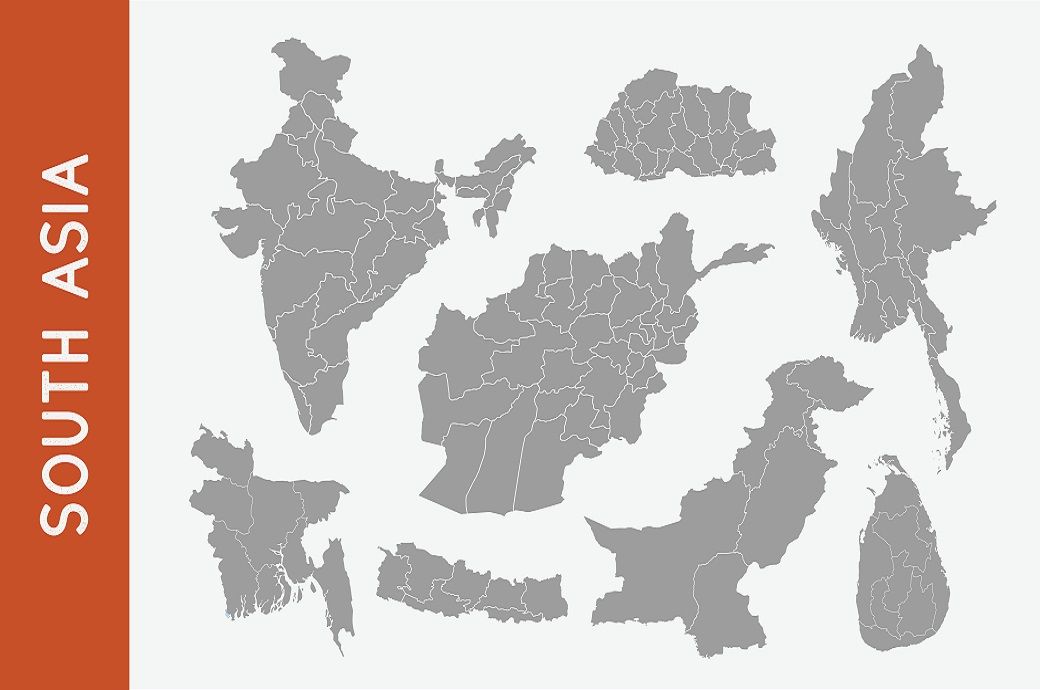
Unlocking untapped potential by raising women’s participation in the labour force and opening further to global trade and investment could help the region grow even faster and achieve its development goals, the World Bank said in its twice-yearly regional outlook.
“Our research shows that raising female labour force participation rates in the region to those of men would increase regional GDP [gross domestic product] by up to 51 per cent,” said Martin Raiser, World Bank vice president for South Asia.
Female labour force participation in South Asia is among the lowest in the world. Only 32 per cent of working-age women were in the labour force in 2023, compared to 77 per cent of working-age men in the region. The figure is well below the 54 per cent average in emerging market and developing economies.
For all South Asian countries except Bhutan, female labour force participation rates in 2023 were 5 to 25 percentage points lower than in countries at similar levels of development. This shortfall is most pronounced after marriage. On an average, once married, women in South Asia reduce their participation in the workforce by 12 percentage points, even before they have children.
The shift toward service activities, usually associated with greater demand for female labour, has not yet led to higher levels of female employment in the region, and firms often state an explicit preference for male workers. Supply-side constraints such as childcare access, mobility and safety, legal restrictions, and conservative gender norms are also significant barriers.
The latest South Asia Development Update projects a broad-based upturn in the region, supported by strong domestic demand in India and faster recoveries in most other South Asian countries. Growth is expected to remain robust at 6.2 per cent a year for the next two years.
Downside risks include extreme weather, debt distress, social unrest and policy missteps like delays in planned reforms. Fragile fiscal and external positions leave little buffer against these risks, a release from the bank said citing the report.
The report’s recommendations include legal reforms to improve gender equality, measures to accelerate job creation, and removal of barriers to women working outside the home like lack of safe transport and quality child and elder care. Such measures could be more effective if social norms became more accepting of female employment.
Another key area of reform is increasing trade openness. Most countries in South Asia rank among the least open to global trade and investment. This greatly limits the region’s ability to take advantage of the reshaping of global supply chains.
Within the region, greater export orientation has been linked to greater female employment. Therefore, increased openness could help the region spur growth as well as boost job creation, especially for women.
The economic outlook for all South Asian countries except Bangladesh and Maldives has been upgraded from six months ago.
In Bangladesh, output growth is expected to slow to the range of 3.2 to 5.2 per cent (with a mid-point of 4 percent) in fiscal 2024-25, as significant uncertainties are expected to keep investment and industrial growth subdued while agriculture growth is expected to moderate following the recent floods.
Bhutan’s economy is expected to grow by 7.2 per cent in FY25, boosted by faster-than-expected recovery in tourism and strong public investment at the beginning of a new five-year plan.
Growth in India is projected to reach 7 per cent in FY25, with larger-than-expected agricultural output and policies to foster employment growth contributing to strong private consumption growth.
In Maldives, output growth is expected to remain modest at 4.7 per cent in 2025, if major bilateral government debt repayments can be rescheduled.
In Nepal, growth is projected to pick up to 5.1 per cent in FY25 amid an expanding hotel sector, growing tourist arrivals and strengthening industrial sector.
Pakistan continues its economic recovery as the relaxation of import controls and projected policy rate cuts are expected to lift growth to 2.8 per cent in FY25.
In Sri Lanka, output is expected to grow at 3.5 per cent in 2025 on the back of stronger-than-expected rebound in industrial activity and tourism, if debt restructuring and planned reforms remain on track.
Fibre2Fashion News Desk (DS)